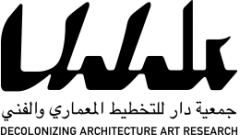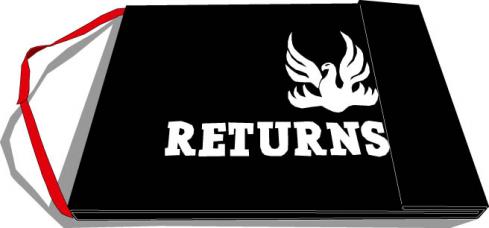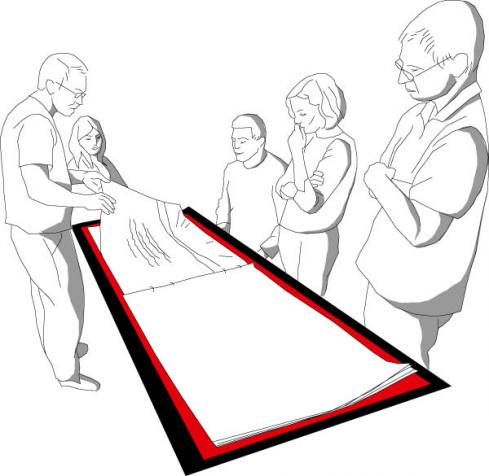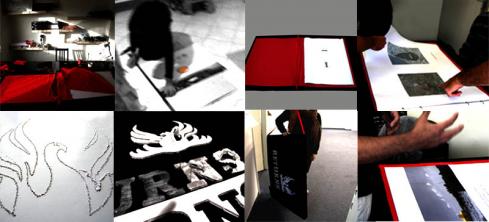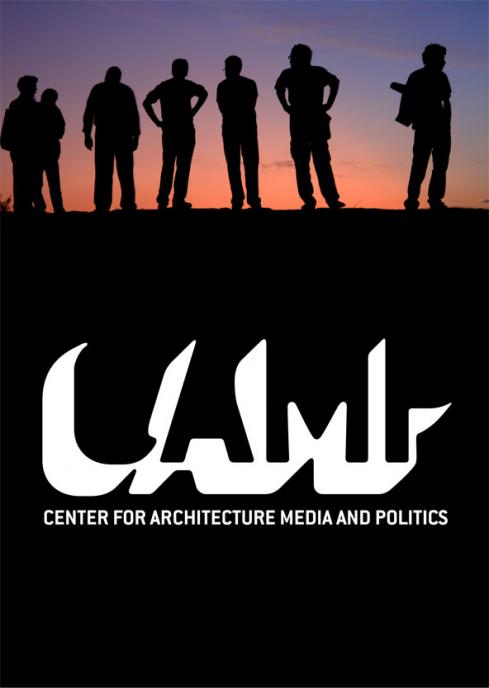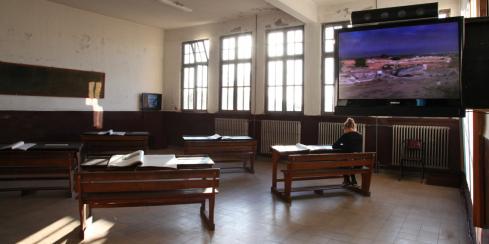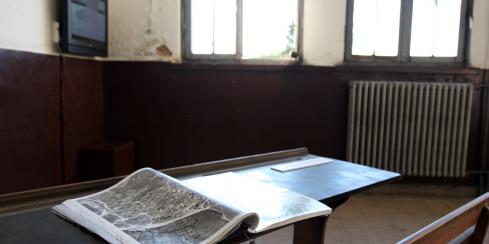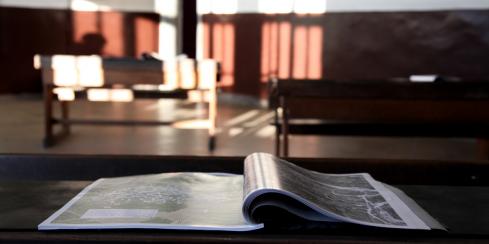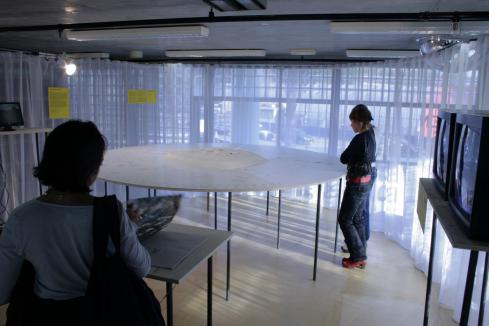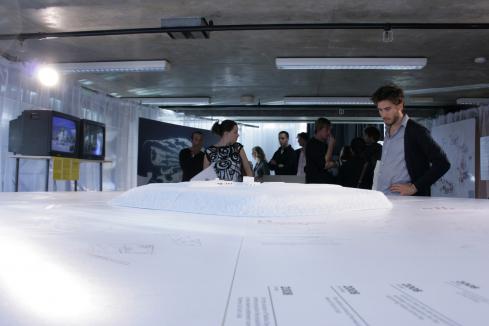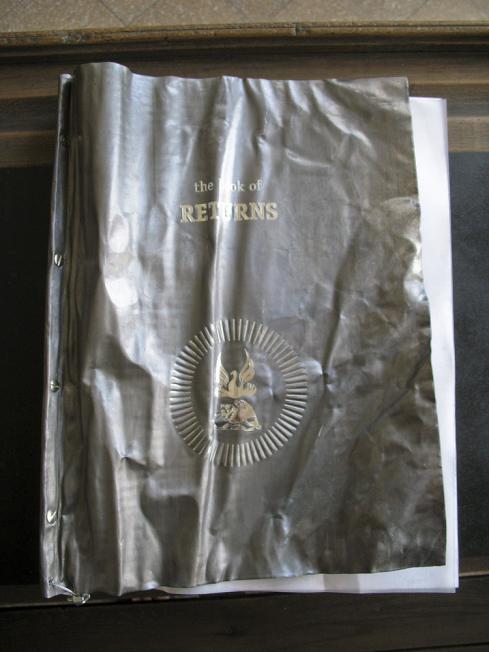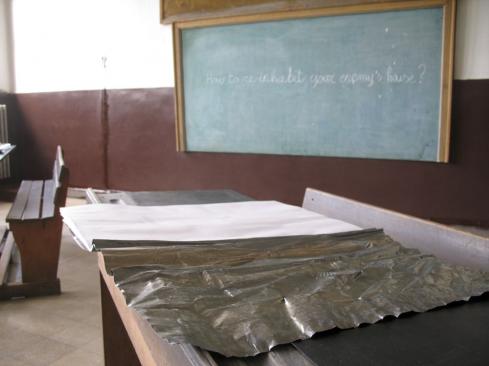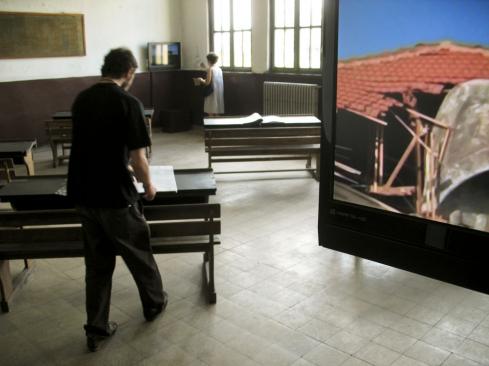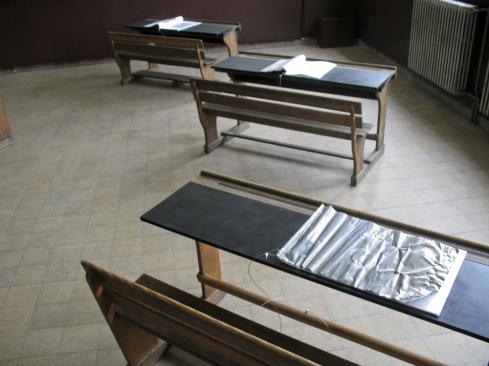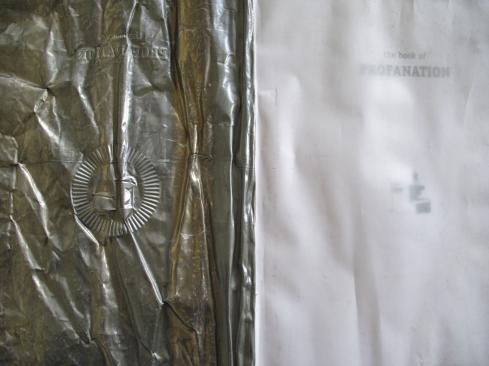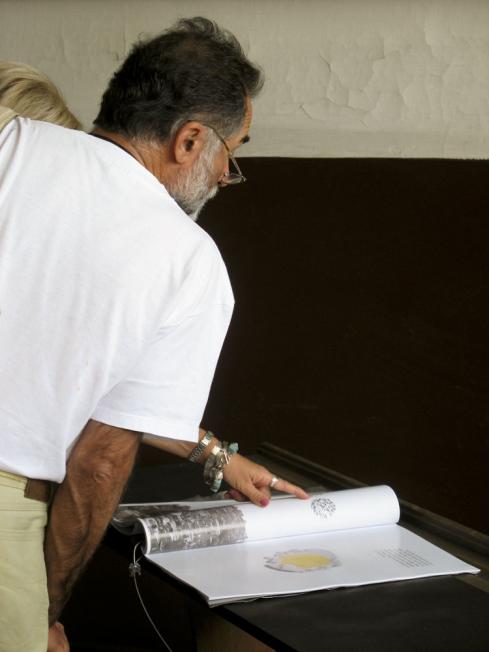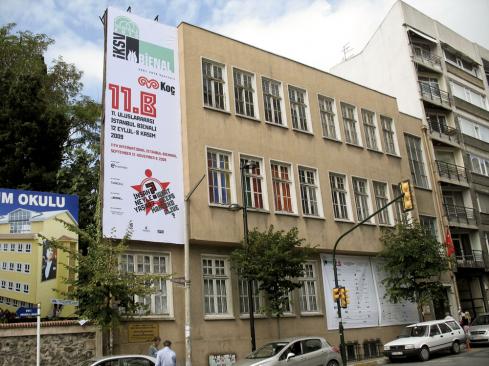Posted: 25.01.2010
Author: DAAR - Decolonizing Architecture Art Residency
The Book of Return in Action
Posted: 20.01.2010
The Book of Return assembled for Zochorot it is simultaneously an archive of aural and drawn testimonies about the Palestinian towns and villages destroyed in 1948, and a collection of ideas for an effective return of Palestinian refugees. More importantly it is a tool around which discussions about different forms of returns can take place. The aim is to add to the legalistic approach to the right of return a projective one which proposes a series of images, aiming to open the imagination towards different forms in which an actual return could take place. We believe that a combination of a legal and an architectural approach are necessary in order to open the political imagination.
The book of Returns is a nomadic device, moving through the different sites and locations where refugees are dispursed, mirroring their political extraterritoriality. In each context it is performing another function. Including maps, drawings, photographs, texts, analysis and actual projects is a fundamental tool to kick start discussions, raise questions, and work around profound fears. Size, material and color are the structural parts for the case. The size plays the role in inviting stake holders to gather around this monumental book. The information collected within the book are intentionaly raw, direct and somehow undetermined, in order to be used as trigers for discussions.
Inaugural Conference of CAMP Center for Architecture Media and Politics
Posted: 10.01.2010
Building on the established intellectual networks and projects of Decolonizing Architecture, CAMP the Center for Architecture Media and Politics is an international collective of architects, scholars, artists, urban planners and theorists committed to research, teaching, and cultural programming that generate new thinking about the role of architecture, media, and the politics of space in zones of conflict. The center aims to combine this research with an equal commitment to teaching, an aim it is pursuing through affiliation with the Al-Quds Bard Honors College for Liberal Arts and Sciences in Abu Dis. C A M P wants to rethink the relationship between research and teaching, to establish innovative programs of study that structure learning in ways that involve students more substantively in research. On this front, C A M P will begin by establishing a summer school that expands the student residency program already in place at Decolonizing Architecture. The inaugural C A M P conference “Architecture, Pedagogy & the Politics of Spatial Knowledge” (12-13 January, 2010) is meant to give preliminary shape to the center and to better define these core objectives: collective research, teaching, curricular development, and cultural programming.
Architettura in Palestina [ITA]
Posted: 21.11.2009
Intervista di Guido Piccoli a Alessandro Petti per la Radiotelevisione svizzera
Dan Rycroft and Paul Young respond to “The future archeology of Israel’s colonization”
Posted: 04.11.2009
In the occasion of De-placing future memory workshop, 24 – 25 September 2009, Institute of Arab and Islamic Studies, University of Exeter, UK
Dan Rycroft and Paul Young respond to The future archeology of Israel’s colonization
MAIL FROM ISTANBUL
LABORATORIES OF RETURNS at the Netherlands Architecture Institute – International Architecture Biennale of Rotterdam 2009
Posted: 5.10.2009
24 September 2009 – 10 January 2010
There is a two directional movement embodied in the concept of refugee. The first trajectory is a literal “line of flight” that carries the refugee away from her home and into the “danger and safety” of exile. The other, in opposite direction but in direct relation to the first, is that of return. The first is an incessant process of transformation and the second is the practice of political desire. But return cannot be understood as suspended politics, rather as politics endlessly practiced at present: through the form of architecture that seeks to communicate temporariness, and through cultural, political, social and military organizations and mobilization. Furthermore, the practices of return are articulated in relation to two places at once — the place of refuge and the site of origins – and both are thus fundamentally spatial practices that often mirror each other. When return becomes possible, the site of origins is already irrevocably transformed. Although displacement has often been from the rural, a return will always to the urban. It is never a simple turning back of time, a return is always a return to the already built.
Our work on the appropriation of settlements and military bases to be evacuated –the “future archaeology” of Israel’s occupation — may articulate a certain laboratory of returns. Recently, this study was expanded to include other instances of displacement such as the afterlife of Italian colonial architecture in Libya — one of the least known but most radical laboratories of architectural modernism. This allows us to expand on the arsenal of the various architectural practices of transformation, always both mirroring and subverting the architecture of built. The revisiting, re-occupation, and appropriation of the already built is thus the urgent task of architecture. A commission by Miske village descendants, to think through spatial strategies for ‘present return’ has lead to an approach that simultaneously involves dealing with the space of displacement (Palestine refugee camps across the Near East) and the place of origins (the fields that are today’s remnants of original villages): A stereoscopic planning – every material intervention in one site has affects across borders in another.
Returns a project by Alessandro Petti, Sandi Hilal, Eyal Weizman
Return to Nature: Mario Abruzzese, Jiries Boullata, Sara Pellegrini, Francesca Vargiu. Landscape design and models: Situ Studio, NYC
Return to the build: Vittoria Capresi, Lorenzo Pezzani
Present Return: Nina Kolowratnik, Marcella Rafaniello, Merlin Eayrs, Ahmad Barclay, Maria Rocco, Sebastiaan Loosen, Bert Ruelens, Tashy Endres, Mahdi Sabbagh
Architects and artists in residence: Elodie Doukhan, Marco Cerati, Beatrice Catanzaro, Maria Vittoria Mastella, Vera Schmidt, Rachela Abbate, Silvia Columbo, Chloe Athanasopoulou
www.iabr.nl
HOW TO RE-INHABIT YOUR ENEMY’S HOUSE?
Posted: 15.09.2009
11th international Istanbul Biennial September 12 – November 8, 2009
In an abandon Greek School, in occasion of the Istanbul Biennial, Decolonizing Architecture inaugurates a lecture for absentee students entitled How to re-inhabit your enemy’s house?
Books of Spatial Profanation. 5 folios: Migrations, Returns, Profanation, Confrontation, Proximity
Gaza 2005: Single channel video, Nadav Harel and Roberto Sartor
Overlooking encounters
Posted: 04.09.2009
Comparing Palestinian and Israeli practices and constructs of separation
during the post Intifada (2005-2009)
Cédric Parizot, Centre de Recherche Français de Jérusalem
This presentation studies interactions between Israelis and Palestinians within places where they still cross each other trajectories during the post Intifada period (2005-2009).Two types of places have been chosen: on the one hand, bypass roads and check points, where Palestinians and Israelis cross each other without meeting and, on the other hand, streets of West Jerusalem were local Jewish Israeli residents regularly interact with West Bank Palestinian workers. The aim is to understand how the constructs of the interactions and spaces can produce at the same time blindness and hypersensitivities: while Israelis hardly notice Palestinians in these places, conversely, Palestinians feel a reinforcement of Israeli presence and occupation. In all, I’ll try to show to what extent, these ordinary interactions and the actors who participate in them play a central role in the production of sense of distinctiveness, discontinuity and separation between Israeli and Palestinian populations and spaces, despite the level of their remaining interactions and the intricateness of their geographic realm. Drawing on this study, I would apprehend separation as a mechanism of power whose functioning involves diffused and heterogeneous forms of power. Moreover, based on this research, I would like to reconsider the multiple dimensions of separation that have been underscored in Eyal Weizman theory of “Politics of verticality”, as well as to deepen the approach of the Israeli Palestinian conflict as a conflict focused on the management of space uses and constructs as Ariel Handel has suggested it.
1000 THOUGHTS 1 BETHLEHEM NIGHT
A series of informal meetings designed to open up a space for the exchange of thoughts and project developments
4 September 2009, 08.30 pm
location: Beit Sahour, Suk Ishab Madrasa Al Chatolic Street
Daar Sandi Hilal & Alessandro Petti
Short video lectures on line
Posted: 18.08.2009
A short cut to know more about the project. Take a look
